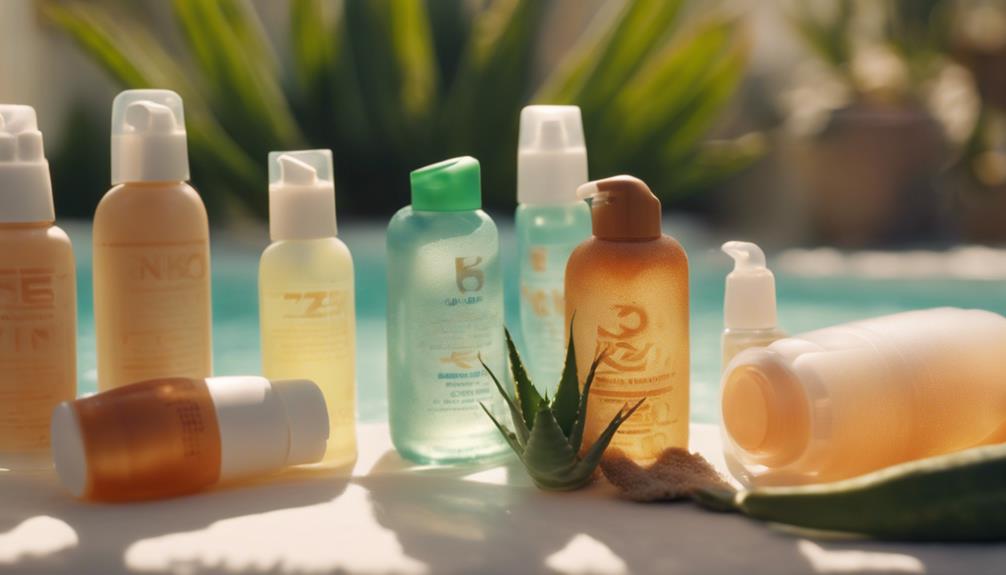Tanning beds might feel like a quick fix for that golden tan, but they come with some serious baggage. Did you know that 75% of skin cancer cases are linked to those harmful UV rays? Yikes! Plus, if you're under 30, your chances of developing melanoma skyrocket. It's like playing with fire—great for a glow, but not worth the health risks! Instead of risking it, why not explore some safer ways to get that sun-kissed look? There's a ton of info out there, and a few fun alternatives to keep your skin healthy and glowing without the scary side effects!
Key Takeaways
- Tanning beds significantly increase the risk of developing skin cancer, particularly melanoma, due to harmful UV radiation exposure.
- Approximately 75% of skin cancer cases are attributed to UV exposure from tanning beds.
- Young individuals under 30 are at heightened risk for skin cancer when using tanning beds.
- UV radiation from tanning beds damages skin DNA, contributing to serious health issues over time.
Tanning Bed Health Risks
Tanning beds pose serious health risks, markedly increasing your chances of developing skin cancer, especially melanoma. You might think a quick tan is harmless, but studies show that using these beds before 30 skyrockets your risk.
Seriously, 75% of skin cancer cases come from UV exposure in tanning beds—yikes! Just imagine lounging in a bed, thinking you're getting a glow, while your skin is crying for help.
Not only do these beds pump out harmful rays, but they also speed up skin aging—who wants that? So, if you're tempted to hit the tanning salon for that “perfect” look, remember: a sun-kissed glow isn't worth the potential price of your health.
Your skin will thank you later!
The Science of UV Radiation

UV radiation, emitted by tanning beds, damages your skin's DNA and greatly increases your risk of developing serious health issues.
This isn't just a little sunburn; it's like your skin's worst nightmare! When those UV rays hit your skin, they mess with your cells, leading to all sorts of troubles, including skin cancer.
Ever heard of melanoma? It's the big, bad one that you really want to avoid. And what's worse? If you're under 30 and using a tanning bed, you're cranking up that risk even more.
So, why take the chance? There are safer ways to get that sun-kissed glow without risking your health.
Protecting Your Eyes

Protecting your eyes from harmful rays is just as important as safeguarding your skin when considering the risks associated with indoor tanning.
Ever thought about how those UV rays don't just stop at your skin? Nope! They target your eyes too, causing everything from sunburn to serious issues like cataracts. Yikes! So, don't skimp on eye protection.
Grab a pair of tanning bed goggles—they're not just stylish, they actually help shield your eyes from those sneaky rays. Plus, they make your tanning session way more comfortable.
Just remember to replace them regularly, because old goggles can lose their magic. Keep your peepers safe, and you'll enjoy your tanning experience without the worry. Your future self will thank you!
Preparing Your Skin

Before your tanning session, a little skin preparation can make a big difference in achieving the best results and minimizing any adverse reactions.
First, exfoliate your skin about 24 hours before tanning—think of it as giving your skin a fresh start! This helps remove dead skin cells, ensuring an even tan.
Don't forget to moisturize afterward; hydrated skin tans better, and you'll avoid that dreaded patchy look.
Just remember, steer clear of lotions with SPF before you hit the tanning bed! You want that glow, not a sunburn.
And hey, if you've got sensitive skin, a quick patch test can save you from irritation. Who needs extra drama, right?
Enjoy your tanning adventure!
Hygiene Practices for Tanning

Maintaining proper hygiene in tanning beds is essential to prevent bacterial growth and skin infections. You wouldn't want to lie down on a bed that's seen better days, right?
Before you even hop in, make sure the tanning bed is cleaned with EPA-approved disinfectants—no one wants to deal with unwanted germs! It's a good idea to clean the surfaces after each use, just to be safe.
Also, consider exfoliating your skin 24 hours before tanning; it helps the tan look even and keeps irritation at bay.
And, please skip those SPF lotions before your session! They can mess with the tanning process.
Benefits of Face Covers

Using face covers while tanning not only enhances comfort but also helps safeguard your facial skin from UV damage, preventing issues like sunspots and premature aging.
Let's be honest—no one wants a leather handbag for a face! A good face cover feels soft and is breathable, so you won't feel like you're suffocating while you're getting your glow on.
Plus, they're super easy to clean; just toss them in the wash, and you're good to go!
By wearing one, you're not just looking out for your skin today, but you're also making sure it looks fabulous tomorrow.
Making Informed Choices

Making informed choices about tanning can greatly impact your skin health and overall well-being. You might think that getting a tan makes you look fabulous, but have you ever considered the risks?
Tanning beds pump out harmful UV rays that can lead to skin cancer. Yikes! Instead of baking under those bright lights, why not try a self-tanner? You'll get that sun-kissed glow without the cancer scare.
Plus, don't forget to protect your eyes—those goggles aren't just a fashion statement! Keeping your skin clean and prepped can also make a difference.
Frequently Asked Questions
How Often Should I Use a Tanning Bed Safely?
You should limit tanning bed use to once every week or two, allowing your skin time to recover. Always prioritize safety measures, like protective goggles, and consider alternatives for a safer, healthier glow.
Are There Age Restrictions for Using Tanning Beds?
Like a key opening a forbidden door, age restrictions for tanning beds exist. Most places require users to be at least 18. Always check local laws to verify you're following regulations and protecting your health.
Can I Tan if I Have Sensitive Skin?
If you have sensitive skin, you can still tan, but you should take precautions. Consider using self-tanners or spray tans, and always patch test products to avoid irritation or adverse reactions.
What Should I Do if I Burn While Tanning?
If you've got a bad burn, soothe the skin with soothing aloe vera or cold compresses. Avoid further sun exposure, hydrate, and let your skin heal naturally. Don't forget to moisturize!
How Do I Choose a Reputable Tanning Salon?
To choose a reputable tanning salon, research online reviews, ask friends for recommendations, and visit in person. Check for cleanliness, staff professionalism, and proper equipment maintenance to guarantee a safe tanning experience.
Conclusion
So, next time you think about hopping into a tanning bed for that golden glow, remember: it's not all sunshine and rainbows!
You've got to weigh the risks, like skin cancer, against the temporary tan.
Imagine this—your skin could be a beautiful canvas without those harmful rays.
Instead, why not embrace self-tanner or enjoy a little sun with sunscreen?
Let's keep our skin healthy and radiant, because you deserve to shine without the burn!










